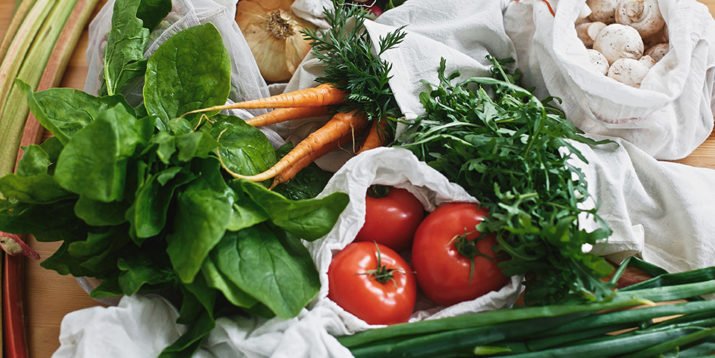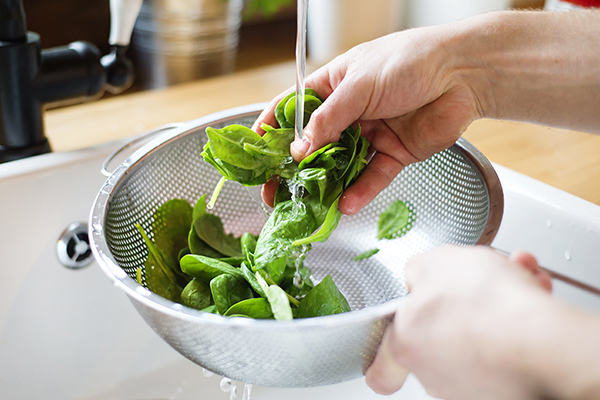5 Best Ways to Store Greens

If you’ve ever stocked your fridge with fresh romaine, arugula, and kale only to find bags of wilted mush a few days later, we have news for you: It’s not the plants’ fault.
And it’s not really your fault, either.
You simply need to brush up on a few food storage tips. It’s not like spinach comes with an instruction manual or the produce section offers a course on how to store greens so they last longer!
If you want to know how to store salad greens, all you have to do is a little research.
Lucky for you, we asked a few registered dietitians how to store greens so that you can enjoy fresh, nutrient-packed meals all week long.
They weighed in with best practices, worst mistakes, and their favorite methods. Read on to learn how to store greens, from arugula to spinach.

1. In a Sealed Container With a Paper Towel
This method is especially effective for delicate plants like spinach, baby greens, and salad mixes, says Bri Bell, R.D.
- “Place a small, clean paper towel in the bottom of the container to absorb moisture,” Bell says.
- Then pack them loosely to allow airflow and prevent leaves from getting slimy, she adds.
- You can also add a dry paper towel to the resealable bag or carton your greens came in.
- Place the sealed container in the coolest part of your fridge (typically in the crisper or near the back of your fridge.)
- Before eating, wash the greens thoroughly and dry them in a salad spinner.
2. Sealed With a Food Saver Sheet
If you’re looking for an eco-friendly method for storing leafy greens, Summer Yule, M.S., R.D.N, recommends paper food saver sheets, available online or at kitchen supply stores.
“Food saver sheets serve the same purpose as paper towels, but they can be used multiple times,” she says. “They help to absorb the moisture that can lead to early spoilage.”
Want to eliminate plastic completely?
“Placing leafy greens in a resealable cotton bag or a glass container is a great, environmentally friendly method to effectively store greens to preserve their freshness,” says Bansari Acharya, RDN.
3. In the Freezer
If you tend to get a little carried away at the farmers market, this tip is for you. Freezing is a great way to store extra leafy greens for future use, says Gabrielle Tafur, M.S., R.D., LN.
“I add frozen greens to my pasta sauces, smoothies, dips, and even mashed potatoes,” she says. “They can also be a great filler for burgers or meatballs if you are trying to increase the nutritional value.”
Tafur washes and dries all her greens and removes stems from tougher produce like kale or collard greens before stashing them in a plastic bag or container. (Go ahead and compost any leaves that have seen better days.)

4. In a Jar of Water
Just like fresh herbs, hearty greens like kale, collard greens, and Swiss chard can be stored in a jar of water in the fridge.
“Wash the greens, then cut the ends of the stems off and place vertically in a jar of water, similarly to how you would place a bouquet of flowers in a vase,” says Bell.
This method for storing leafy greens, while simple and artful, is not particularly space-efficient. It may not work for small or crowded refrigerators.
5. In the Crisper
Don’t be tempted to shove all your produce in the crisper and hope for the best. “This is a bad idea because some fruits will emit ethylene gas, which expedites spoilage of many greens,” says Kristin Gillespie, M.S., R.D., LD.
Some bad bedfellows include apples, apricots, avocados, bananas, honeydew, and cantaloupe, as they produce high levels of ethylene.
Instead, store greens alongside ethylene-sensitive foods like carrots, cauliflower, eggplant, raspberries, and strawberries, Gillespie says.
